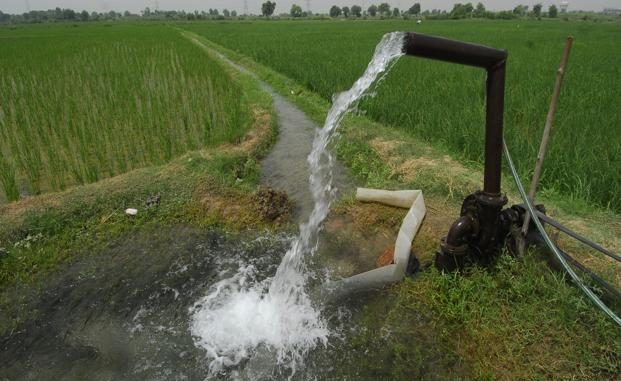
India is one of the world’s largest food producers, producing enough to support most of its 1.2 billion people and to export $39 billion of raw agricultural produce every year, including 4.4 million tons of rice. But this food production is heavily dependent on groundwater irrigation, and there is concern that a changing climate could dry up the industry. Now a study shows that even in regions that experience an increase in rainfall in the future, the expansion of irrigated agriculture will require increasing amounts of unsustainable groundwater.
Currently 14% of India’s population depends on food produced using groundwater. Small-scale farmers, who grow over one third of India’s food grains, rely on groundwater to irrigate half their land. But since the 1980s, groundwater levels have been dropping, especially in the northwest of India where they’ve plummeted from 8m underground to 16m. Replenishing this groundwater takes thousands of years, so it is essentially a non-renewable resource.
To find out what the future holds for India’s farmers, Esha Zaveri from Pennsylvania State University, US, and colleagues used detailed crop and weather data gathered since 1970 to assess the relationship between monsoon variation and irrigation decisions. They explored how this relationship might change in the future using a hydrological model and climate projections up to 2050. They also assessed the impact of the “National Rivers Linking Project” (NRLP), a policy initiative proposed by the Government of India to move 178 billion cubic metres of water per year across river basin boundaries.
The results suggest that under future climate change, most of Punjab and Haryana, northern areas of Rajasthan and Gujarat, and parts of Uttar Pradesh and Tamil Nadu will face groundwater level declines. Many of these regions already suffer from depleted groundwater, and as the levels become deeper, extraction will require more powerful and expensive pumps. For India’s millions of smallholder farmers, this could have a devastating impact, Zaveri and her colleagues fear.
“Studies are beginning to show that higher incidences of poverty are seen in areas where more capital-intensive technology is needed to raise water beyond certain thresholds,” she said, “and that farmers are migrating to cities, or moving away from cultivation, in areas that have reached advanced states of depletion where digging deeper wells or installing more powerful pumps no longer helps.”
Even in regions where climate change brings increased rainfall, the expansion of irrigated agriculture will still necessitate more extraction of non-renewable groundwater, the study shows. The findings are published in Environmental Research Letters (ERL).
So can the NRLP come to the rescue? If the project includes plentiful reservoir storage, Zaveri and her team found, then it has the potential to alleviate up to 16% of groundwater demand by 2050. “Without the water storage created by reservoirs, water transfers in the wet season were not available for dry-season irrigation,” said Danielle Grogan from the University of New Hampshire in the US. In that case, the NRLP would fail to make much difference.
There may be more cost-effective ways to alleviate groundwater demand, such as more efficient irrigation and growing less water-intensive crops during the dry season. For India, groundwater management is an increasingly urgent problem. If the country fails to address it in the near future, it could end up with irrigation water deficits of up to 40% by 2050, and an associated drop in food production, according to the study.
Source: environmentalresearchweb

Leave a Reply